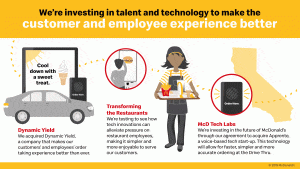The use of evolving technologies, scientific developments, data and algorithms can help us transform many aspects of our life & world. Similarly, Uber, the company which helps us drive around is rigorously trying to bring about a substantial transformation in transportation around the globe by using AI to power technologies supporting Uber’s platform, giving freedom to engineers to make spontaneous decisions to improve user experiences.
Uber has a center named Uber AI which powers application in computer vision, intelligent location and sensor processing, advanced optimization methods and much more, which helps Uber with transportation and mobility, to customer support and driver-partner navigation. It has been able to achieve notified increase in demand prediction and applaudable pick-up experiences. Uber has been working on increasing its location accuracy, speed, coverage and heading of vehicle locations using sensing and perception. If the rider and driver have more accurate locations of each other, cancellations can be reduced, ETA improved and finding one another becomes easier.
Furthermore, Uber’s idea is to use computer vision to its fullest for maximum customer safety and making the ride efficient. The Computer Vision team enables quick validation of driver identity when they come online. ML models powered by neural networks forecast rider-demand, pick-up and drop-off ETA’s and hardware capacity planning requirements. Uber has also leveraged its conversational AI platform to improve communication with customers and solve their issues timely & accurately. This also allows drivers to comfortably speak with customers via hands-free-pick-up and one-click chat while driving.
Uber continues to promise to widely use Artificial technology throughout its platform to improve routes, to receive more accurate forecasting of rider demand and deliver safer and more reliable experiences to customers. In the world around us, slowly and steadily, companies are coming in terms with Artificial Intelligence and believing that adapting to AI is fundamental to one’s growth and success in the coming times.
Sources : https://eng.uber.com/applying-artificial-intelligence-at-uber/
https://www.uber.com/us/en/uberai/











